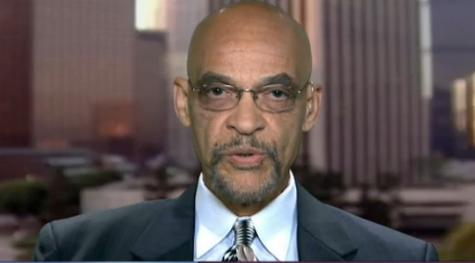Earl Ofari Hutchinson
One week before the 65th anniversary, May 17, of the landmark Brown v. Board of Education landmark school desegregation case, a photo appeared that caused a firestorm of anger and protest. The photo was of four women, none African-American, smiling and grinning while holding a hanging noose. The women are teachers at a Palmdale, California elementary school. The teachers were promptly suspended and there were parent protests. However, the teacher’s flippant action displaying a symbol of the worst racial violence against African-Americans pounded home again a bitter fact about race and America’s schools. It’s still a chronic national crisis that in six plus decades since Oliver Brown the parent who emblazoned his name on the Supreme Court school desegregation case has in some respects gotten worse.
Like clockwork, the UCLA Civil Rights Project has released studies timed to commemorate the Brown decision. It repeatedly finds that legions of school districts in the South, West and North are more segregated than at the time of the Brown decision. The studies also find that more and more school districts have re-segregated over the past quarter century.
The students in these schools are poorer than students in predominantly, or exclusively white schools. They do far worse in reading and math tests than non-black or black students at racially mixed schools. The black and Latino students who attend racially isolated schools are not in these schools because of Jim Crow segregationist laws, or failed school bussing policies. Five decades of pro-integration court decisions, limited bussing programs, civil rights legislation, and the election and the appointment of soaring numbers of blacks and Latinos to boards of education have racially remade public education. Black and Latino public school superintendents and top administrators are now fixtures in most urban school districts. They are not the problem.
The blame for the chronic school re-segregation is the deep persistence of housing discrimination, poverty, and the near universal refusal of federal and state courts to get involved in any more school desegregation cases. The Supreme Court put the cap on the court’s role as a facilitator of integration in 2007 when it struck down school bussing plans in Seattle and Louisville.
Then there’s the continuing flight of white, as well as black and Latino middle-income persons, to the suburbs. This ensures that even more poor black and Latino students will be perpetually trapped in segregated schools.
The hodgepodge of panaceas that conservatives delight in ladling out to raise minority achievement levels include more charter schools, school vouchers, a wholesale dump of incompetent teachers and bureaucrats, magnet schools and annual testing. Some districts advocate scrapping race altogether and using income and other indicators as the means to achieve racially balanced schools. However, even in the school districts where they have been tried, the results have been mixed. There are many low achieving students in charter, and magnet schools, as well as schools that have opened the doors to school voucher plans just as in some public schools.
Even if the Supreme Court had upheld the Louisville and Seattle integration plans some years ago, it still wouldn’t have changed the racial picture for most urban school districts. The bitter truth is that while segregated public schools will never again be the law of the land, they remain a fact of the land, and the overwhelming majority of black and Latino students will be stuck in segregated schools. And in those schools that appear to be racially integrated there’s less than meets the eye. Studies show huge gaps in the treatment of black and Latino students by teachers and administrators. They are more likely to be piled in special education and vocation classes and suspended or expelled at far higher rates than white students.
This points to something that’s often glossed over in the debate about failing inner city public schools. That is that even segregated schools don’t have to be inherently failing schools. There are countless examples where teachers and administrators have rolled up their sleeves and worked hard to transform racially segregated schools from permanent monuments to educational failure to models of success. They fight hard to upgrade the texts and facilities, to get administrators to purchase more computers, and to get the highest caliber teachers, counselors, and administrators possible at these schools. They demand that teacher unions actively work to enforce strict professional standards to hold teachers at failing inner city public schools accountable for the performance of their students. This is a fight that must continue.
America is a nation of diversity, and it will get more so in the years to come. The schools will be too. But even those whose students may never sit in a racially mixed classroom can still be shining examples of student achievement for black and Latino students. It just means that school districts will have to be more creative in how they attain it. That’s something that Mr. Brown might not tear up over but applaud.
Earl Ofari Hutchinson is an author and political analyst. He is the author of Biden Versus Trump: Who Would Win? (Middle Passage Press/Amazon Kindle). He is a weekly co-host of the Al Sharpton Show on Radio One. He is the host of the weekly Hutchinson Report on KPFK 90.7 FM Los Angeles and the Pacifica Network.

